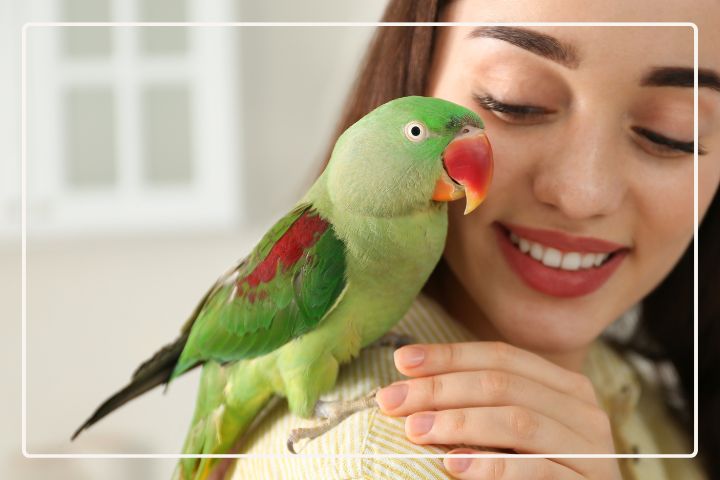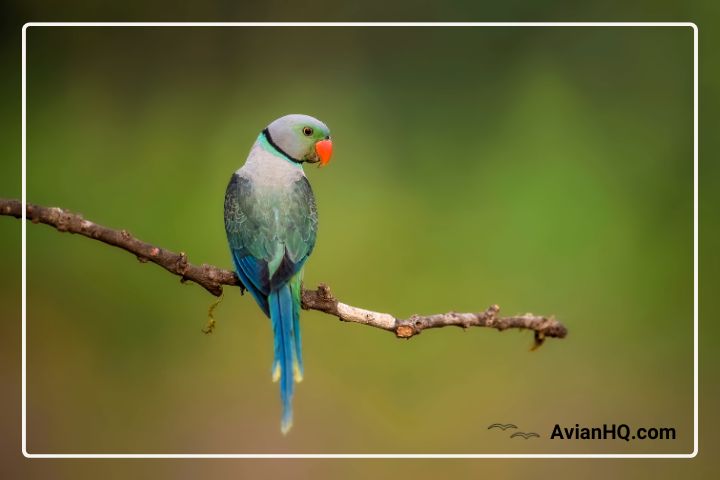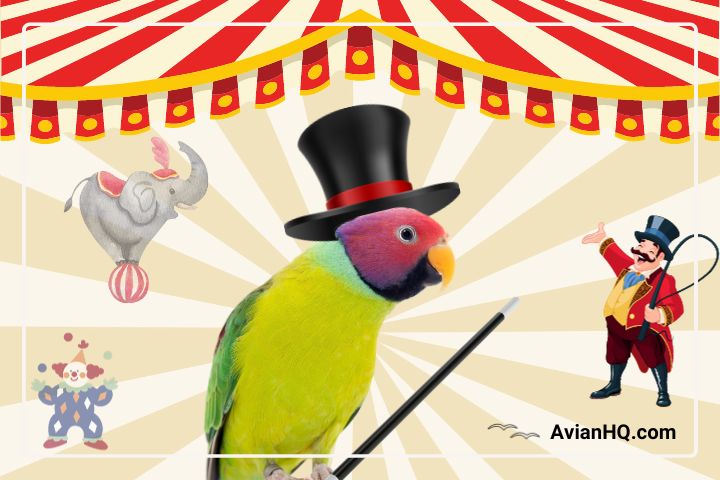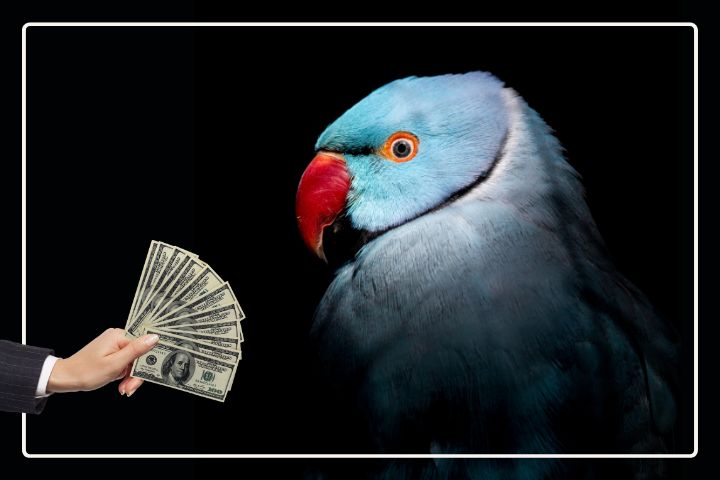The Complete Guide to the Majestic Long-tailed Parakeet (Psittacula longicauda)
The Long-tailed Parakeet is a stunning tropical bird renowned for its exceptionally long tail feathers. In this comprehensive guide, discover everything you need to know about this captivating parrot species, from its appearance and behavior to keeping it as a pet.
An Overview of the Graceful Long-tailed Parakeet
The Long-tailed Parakeet (Psittacula longicauda) is a medium-sized parrot belonging to the family Psittaculidae. Some key facts about this bird include:
- Other Common Names: Long-tailed Green Parakeet, Indian Ringneck Parakeet
- Scientific Classification: Order Psittaciformes, Family Psittaculidae, Genus Psittacula
- 5 Recognized Subspecies: P. l. longicauda, P. l. defontainei, P. l. nicobarica, P. l. tytleri, P. l. modesta
- Native Range: The Indian Subcontinent and Southeast Asia
Appearance and Size
With its vibrant emerald plumage and incredibly lengthy tail streamers, the Long-tailed Parakeet is a visually striking tropical bird. Let’s examine its elegant aesthetics in more detail.
This slender parrot has a predominantly grassy green coloration. Its back, wings, belly and extraordinarily long tail feathers are covered in bright, leafy green feathers with a subtle bluish sheen in the correct light. The bird’s chin and throat are a deep blackish color, providing contrast against the greens.
On its cheeks and nape, both sexes display patches of soft pinkish-red feathers. However, one key difference between males and females is the cap. Males have a bold black cap crowning their heads, while females lack this and exhibit simply green feathers on the crown. Thus, the male’s facial feathering has higher contrast with the vivid black, red and green areas.
The Long-tailed Parakeet’s most exceptional feature is of course its tail. This parakeet has incredibly lengthy central tail feathers that may exceed the length of the entire body and wingspan! The outer tail feathers are shorter, but all are gracefully tapered to fine points. When perched, the long tail drags well below the branch. While in flight, the tail trails like extravagant green and blue streamers.
Compared to other parakeets, the proportional tail length versus body size is extraordinary in this species. No other parakeet has such pronounced tail streamers relative to its body proportions. This singular trait makes the Long-tailed Parakeet one of the most ornate and easily recognized parrots in the world.
Details:
- Size: 40-43 cm (16-17 in) from head to tail.
- Tail Length: 15 – 27 cm long (shorter tails are usually juveniles)
- Plumage: Bright emerald green feathers cover the body, wings and tail. The chin and throat are blackish while the cheeks and nape are pinkish-red. The long central tail feathers are bluish-green.
- Beak: Bright cherry red.
- Eyes: Pale yellowish-white.
- Legs: Grey.
- Weight: 110-140 g (4-5 oz). Females tend to be a bit lighter.
- Wingspan: About 25-30 cm (10-12 in).
Juveniles have a more muted green coloration overall, with a grey beak and eyes. Their irises darken to brown over time.
This parakeet goes through a complete molt once a year after breeding season. Their vibrant coloration is restored through the replacement of old, worn feathers.
Distribution, Habitat and Behavior
Long-tailed Parakeets are native to the Indian subcontinent, ranging across India, Pakistan, Sri Lanka and Nepal. Some isolated populations occur in southeast Asia including Myanmar, Thailand and parts of China.
Within their expansive range, these parrots inhabit a variety of wooded habitats including tropical and subtropical forests, mangrove forests, orchard groves and city parks and gardens. They tend to avoid dense, impenetrable jungle.
The Long-tailed Parakeet is mainly active during daylight hours and is considered diurnal. They are highly social birds that travel together in noisy, excitable flocks of 20+ individuals. Their flight is fast and direct, and they are excellent, agile fliers capable of maneuvering nimbly among trees.
At night, most flocks will converge and sleep communally inside the hollow cavities of tall, old trees. They prefer natural cavities but may also nest in palm trees, building crevices or even abandoned woodpecker holes.
Diet wise, these parakeets are mainly herbivorous. They feed on a variety of seeds, nuts, berries, fruit, buds and nectar from blossoms. Occasionally they may eat some insects and their larvae as well.
Long-tailed Parakeets form monogamous bonds and may mate for life. During breeding season, paired couples break off separately to nest and breed. The male will feed his nesting female frequently as she incubates eggs and tends to the young.
These intelligent parrots have charming, playful personalities. In the wild, they are often seen hanging upside down or climbing about acrobatically among high branches. They are sometimes considered minor crop pests for feeding on orchard fruits. Their average lifespan is 10-15 years in captivity, and about 5 years in the wild.
Keeping Long-tailed Parakeets as Pets
The Long-tailed Parakeet is a popular pet bird in many parts of the world. They are intelligent, social, and can learn to talk with proper training. Here are some tips on selecting and caring for a Long-tailed Parakeet:
Choosing Your Bird
When selecting a Long-tailed Parakeet as a pet, try to pick out a hand-fed baby bird that has been well-socialized to humans. Avoid taking birds straight from the wild. Look for signs of good health including bright, clear eyes, smooth feathers, and strong stance and grip on the perch. Be wary of any puffed out, lethargic birds that seem ill. Make sure your bird is active, alert and responsive to your presence.
Housing
These energetic, active parakeets need a spacious cage to live happily. A cage size of at least 36 inches wide is recommended. Fill the cage with several natural wood perches of varying widths and textures to exercise feet and prevent sores. Line the bottom with paper that can be frequently changed out. Ensure the cage is placed properly to allow light while avoiding direct drafts or overheating.
Taming and Training
Building a bond of trust is key to a good pet relationship. Spend time interacting with your Long-tailed Parakeet daily through talking, offering treats by hand, and positive reinforcement training. With patience, you can teach them to comfortably step up onto your hand or finger. More advanced behaviors like talking, tricks and flying to you on command can also be taught over time.
Enrichment
Prevent boredom by providing an array of safe, destructible toys for your parakeet to chew and play with. Allow supervised time outside the cage daily to stretch wings and explore their environment. Rotate new toys into the cage frequently to pique their natural curiosity and foraging instincts. Regular social interaction and training also enriches their life.
Potential Health Issues
Some common health issues to monitor for include obesity, respiratory infections, feather plucking, and egg binding in females. Consult an avian vet for guidance on nutrition, environment and proper care. With attentive care, Long-tailed Parakeets can live 10 years or longer.
Finding and Selecting Your Feathered Friend
Once you’ve decided to add a Long-tailed Parakeet to your family, it’s time to find the perfect bird. Here are some tips on locating and choosing your companion:
- Search online for reputable breeders in your area that specialize in Long-tailed Parakeets. Read reviews and inspect their operation thoroughly.
- Visit avian specialty stores or bird breeders at bird fairs or expos. Interact with the birds and ask questions.
- When possible, try to find out the bird’s history and age. Selecting a hand-fed, socialized youngster is ideal.
- Schedule a meet and greet to spend time interacting one-on-one with your potential feathered friend before adopting.
- Assess the individual bird’s overall health, activity level and temperament. Look for signs of illness or behavior issues.
- Confirm that Long-tailed Parakeets are allowed where you live. Some apartments or condos prohibit louder birds.
- Be prepared to spend anywhere from $300 to over $1000 depending on rarity of color mutations.
- Once you’ve found the perfect parakeet, bring them home and begin the bonding and training process.
With some searching, you should be able to locate a healthy, vibrant Long-tailed Parakeet that seems like a good personality match. This will set you both up for success as you embark on a rewarding decades-long relationship!
Preparing for Your New Family Member
Bringing home a new Long-tailed Parakeet is an exciting time! Make sure you are fully prepared and set up their living space in advance:
- Purchase a large enough cage, at least 36″ wide, with horizontal bars they can climb. Ensure it is new or thoroughly cleaned.
- Add several natural wood perches of varying widths and textures placed at different heights.
- Include food and water bowls, foraging and chewing toys, mirrors and swings.
- Stock up on a pellet-based diet as the main food, plus bird-safe fruits, vegetables, nuts, seeds for variety.
- Get foraging toys you can hide treats inside to stimulate their natural foraging instincts.
- Ensure you have a bird-safe mineral supplement and vitamins to add to their water or food.
- Acquire grooming supplies like nail clippers, a spray bottle for misting feathers.
- Buy non-toxic bird-safe cleaning products for the cage, perches, feeders and waterers.
- Pick up some books or guides on Long-tailed Parakeet care and training for reference.
- Childproof any potential hazards in the room their cage will be in.
- Lastly, puppy proof the areas they will have out-of-cage time in.
With preparation and planning, you’ll give your new family member the best possible start in their new forever home!
Breeding Long-tailed Parakeets
Breeding in captivity is rarely successful. The main challenges come from the difficulty of pairing compatible mates, as these parakeets may not accept a partner that they haven’t chosen themselves. Even if pairs manage to breed, it is extremely challenging to keep the fledglings alive.
Overview of their reproduction process:
| Breeding Season | In captivity, Long-tailed Parakeets will usually breed in the spring, between March and June. This coincides with the timing in their native range. |
| Courtship | During the courtship display, the male parrot bows down in front of the female, while regurgitating and making circular movements with its head, and gently touching the female’s beak. |
| Nesting | The pair will chew up branches and twigs to construct a nest in a hollow tree cavity or nest box provided. The female then lays a clutch of 2-4 oval white eggs. |
| Incubation | The female incubates the eggs for approximately 22-24 days while being fed by her mate. Humidity and temperature must be ideal. |
| Hatching | The altricial chicks are naked, helpless and blind at hatching. They are brooded and cared for by both parents. |
| Fledging | At around 7 weeks old, the chicks are ready to leave the nest. Their flight feathers have grown in but they are still dependent on parental care. |
| Weaning | At 8-10 weeks old, the young birds begin the weaning process as they are taught to feed themselves over a period of 2-3 weeks. |
| Maturity | Juveniles reach sexual maturity for breeding at around 2-3 years old. Their adult plumage is acquired by 1 year old. |
| Hand-Raising | Occasionally hand raising abandoned chicks is done using specialized feeding formula given every few hours. This is extremely challenging and has a low success rate. |
Breeding parakeets takes much experience. Always ensure you have a reliable avian vet available for any issues.
Conservation Status and Threats Facing the Species
In the wild, Long-tailed Parakeet populations are declining and the species is under threat. Here is an overview:
- Status: Classified as Near Threatened on the IUCN Red List of Threatened Species. Their numbers are decreasing in much of their natural range.
- Threats: Habitat destruction is a major factor, as forests are cleared for agriculture and human development. Capture for the pet trade also remains an issue. They are persecuted by some farmers for crop damage.
- Population Declines: Exact data is lacking but surveys suggest declines of 30% to 50% in the last few decades across their broad range.
- Conservation Actions Needed: Protecting remaining old-growth, native forests is crucial. Regulating and monitoring the pet trade will help, as will working with farmers to reduce conflicts. Further research on populations is needed. Captive breeding may aid reintroduction efforts.
- How You Can Help: Purchase only captive-bred birds. Never release non-native parakeets. Support conservation groups and lobby for habitat protection laws. Report suspected smuggling activities to authorities.
Ensuring this species survives requires a collaborative global effort between governments, scientists, breeders and passionate bird lovers. With commitment, the elegant Long-tailed Parakeet can flourish for generations to come.
Fascinating Facts about the Long-tailed Parakeet
- The tremendously long tail feathers can reach up to nearly 20+ inches in large males, but as an adaptation to their arboreal lifestyle, the feathers’ quills have evolved to be extremely light and rigid.
- Long-tailed parakeets are considered crop pests in some parts of their range for feeding on orchard fruits like mangos. Farmers use noise makers, nets or poison to chase birds away.
- These parakeets are popular talking birds, with some individuals learning vocabularies of over 100 words! They enjoy learning mimicry.
- In their native regions, Long-tailed Parakeet chicks are sometimes poached from nests to be sold in the lucrative pet trade. This contributes to declining wild populations.
- The oldest known Long-tailed Parakeet lived to over 33 years old. With proper care, they are a long-lived pet species.
The 5 Recognized Subspecies of the Psittacula longicauda
Here is a description of the distribution and physical differences of the Long-tailed Parakeet subspecies:
Psittacula longicauda defontainei
Is found in the Natuna and Riau Islands of Indonesia, as well as on the islands of Bintan and Karimata. This endangered subspecies has slightly duller plumage compared to the nominate race.
Psittacula longicauda longicauda
Is the nominate, original subspecies first described. It has the broadest distribution across the species’ range.
Psittacula longicauda modesta
Is endemic to Enggano Island in Indonesia. This endangered form is smaller in size than other races. Its plumage is duller green overall.
Psittacula longicauda nicobarica
Is native to the Nicobar Islands. It has brighter green and blue plumage compared to the nominate subspecies.
Psittacula longicauda tytleri
Inhabits the Andaman Islands. It is similar in appearance to P. l. longicauda but has a darker green collar and more yellowish cheeks.
Bringing the Elegance of the Long-tailed Parakeet Into Your Life
With their dazzling emerald plumage and incredibly lengthy streamer-like tail feathers, the Long-tailed Parakeet is truly one of the most stunning members of the parrot family. Equally admired for its beauty and intelligence, this tropical bird has secured a place in the hearts of parrot enthusiasts worldwide. We hope this guide has provided you with a comprehensive overview of the natural history and care of this captivating species – and perhaps inspired you to make one of these graceful green beauties part of your family!







